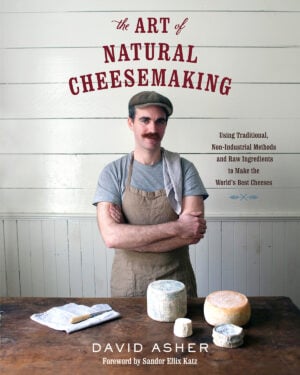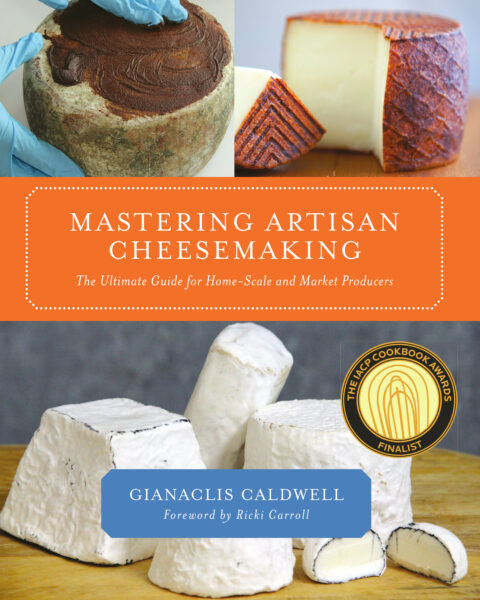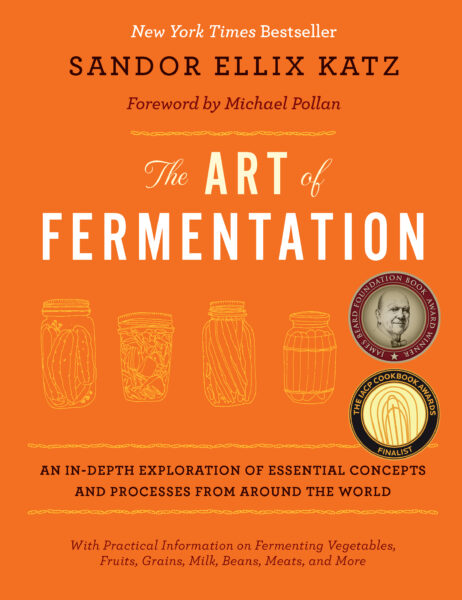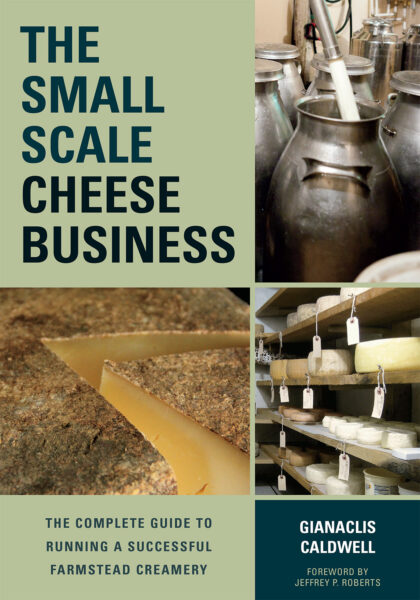Create Your Own Chèvre Using Natural Ingredients
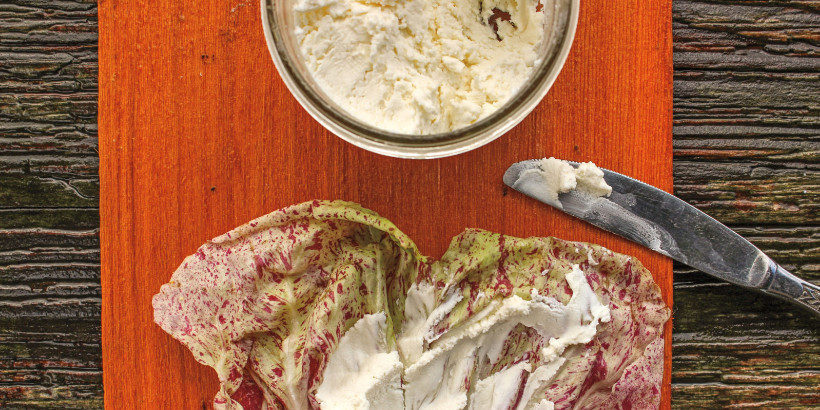
Making cheese at home may seem like a time and labor-intensive process — but what if you could have a delicious, high-quality cheese that practically made itself? With chèvre, you can.
The following recipe for all-natural chèvre will change the way you look at homemade cheese!
The following is an excerpt from The Art of Natural Cheesemaking by David Asher. It has been adapted for the web
The cultural circumstances within which chèvre evolved make the production of this cheese ideally suited to our modern times.
With the many distractions and diversions in our lives, it is often difficult to find dedicated time for cheesemaking; chèvre’s simplicity helps it find a place in our daily rhythms.
Using Cows’ Milk for Chèvre
Cows’ milk can be used in this recipe in place of goats’ milk: the soft and creamy curd that results is firmer than yogurt cheese and is sometimes called cream cheese, fromage frais, or Neufchâtel, though that final name is an American bastardization of a very different bloomy-rinded French cheese.
The long fermentation of the cows’ milk allows its cream to rise, creating a beautiful layer of creamy curd atop the whiter curd below.
Using Chèvre As A Canvas
Chèvre is excellent on its own but also serves as a delicious canvas for adding many other herbs, spices, and flavors.
Roasted or raw garlic, cracked pepper, preserved lemons, even fruit preserves all pair well with chèvre. But be sure to add them at the end of the cheesemaking process, when the cheese is salted and drained; if the flavorings are added too soon, their flavor will flow away with the whey.
RECIPE: Natural Chèvre
Chèvre is generally eaten fresh in North America, so it is a little-known fact that it can also be aged! Chèvre is the foundation of an entire class of aged cheeses that start as this fresh cheese.
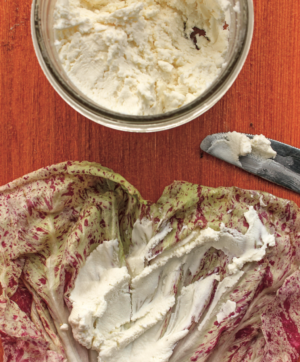 Time Frame
Time Frame
30 minutes to make; 2 days total
Yield
Makes about 1 1/2 pounds (700 g) chèvre
Equipment
- 1-gallon (4-L) capacity heavy-bottomed pot
- Wooden spoon
- Ladle
- Du-rag or other good cheesecloth
- Steel colander
- Large bowl
Ingredients
- 1 gallon (4 L) good goats’ milk
- 1/4 cup (60 mL) kefir or active whey
- 1/4 dose rennet (I use less than 1/16 tablet WalcoRen calf’s rennet for 1 gallon milk)
- 1 tablespoon (15 mL) good salt
Procedure
- Warm the goats’ milk to around 90°F (32°C) on a low heat, stirring occasionally to keep it from scorching.
- Stir in a cheesemaking starter culture: Pour in the kefir or whey and mix it in thoroughly.
- Stir in a small amount of rennet: Dissolve the quarter dose of rennet in 1⁄4 cup (60 mL) cold water. Mix it into the warm milk gently but thoroughly.
- Leave at room temperature, covered, for 24 hours. After the long fermentation period, the curd will shrink and sink to the bottom of the pot.
- Ladle the curds into a cheesecloth-lined colander perched over a bowl to catch the whey. Tie the cheesecloth into a bag, and simply leave it in the colander to drain.
- Drain for at least 6 hours, at room temperature. Cover with a clean towel if need be to keep flies from landing on it. Be sure that the curds are well suspended above the level of the whey.
- Salt the curds: Open up the cheesecloth bag and sprinkle 1 tablespoon (15 mL) salt over the surface of the cheese. With a wooden spoon, mix the salt into the cheese thoroughly.
- Tie up the cheesecloth bag, and let the salted curds drain for another hour or two. Once the cheese feels quite dry, it’s ready to eat, or have herbs or spices added to it.
- Keep chèvre in the refrigerator if you don’t eat it right away. It will keep for at least 2 weeks.
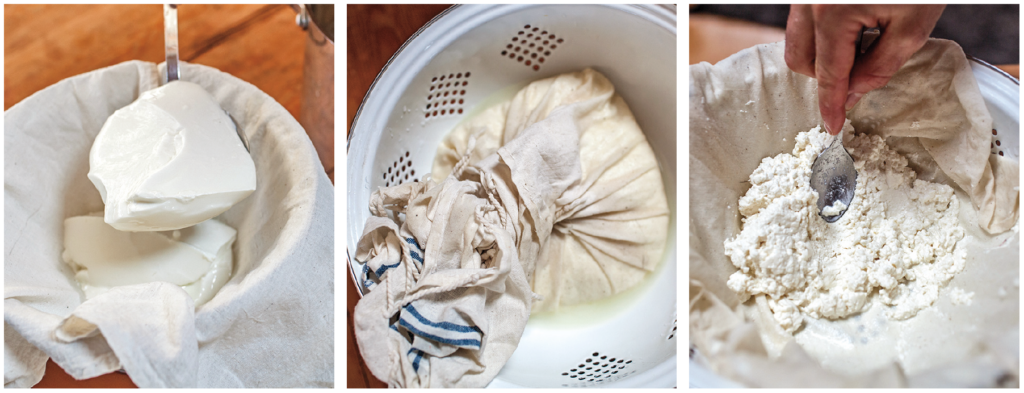
To make chèvre, ferment goats’ milk with rennet until it yields a soft curd; hang the curd to drain its whey; and salt the cheese to preserve it.
Recommended Reads
Recent Articles
Oh, honeysuckle…how we love thee. If only there was a way to capture the sweet essence of this plant so we could enjoy it more than just in passing. Luckily, foraging and some preparation can help make that happen! Here’s a springtime recipe that tastes exactly like honeysuckle smells. The following excerpt is from Forage,…
Read MoreIntroducing…your new favorite brunch dish! This whole broccoli frittata is packed with fresh, wildcrafted flavors that are bound to help you start your day off on the right foot. The following is an excerpt from The Forager Chef’s Book of Flora by Alan Bergo. It has been adapted for the web. RECIPE: Whole Broccoli Frittata…
Read MoreWondering where to forage for greens this spring? Look no further than hedges, which serve as natural havens for wild greens and herbs! The following is an excerpt from Hedgelands by Christopher Hart. It has been adapted for the web. Food from Hedges: Salads and Greens Let’s start by looking at all the wild foods…
Read MoreThere’s a whole new world out there when it comes to koji. It doesn’t matter if you’re making bread, cheese, or ice cream, koji helps you pump up the flavor! Growing Koji in Your Own Kitchen Koji, the microbe behind the delicious, umami flavors of soy sauce, miso, fermented bean sauce, and so many of…
Read MoreWhether you’re looking to replace your end-of-the-day cocktail, relax before bed, or want something new to add to your tea, this non-alcoholic mocktail syrup base will do the trick. Delicious and all-natural, take a sip of this nightcap mocktail and feel your troubles melt away. The following is an excerpt from Herbal Formularies for Health…
Read More

